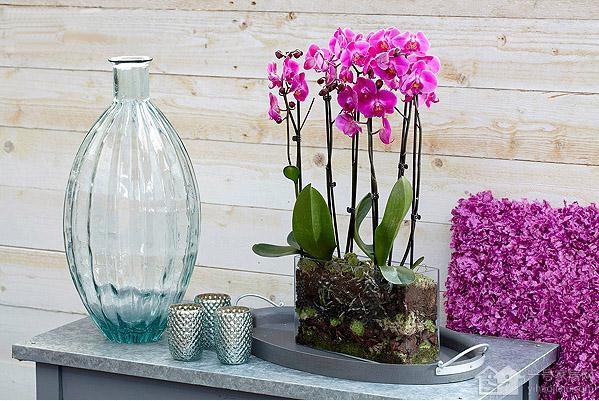Seven methods of potted culture of night incense
The best growth temperature is 18 Mel 30 degrees Celsius, below 5 degrees Celsius, the growth is slow above 35 degrees Celsius, and the reproductive growth period is 5 Murray 18 degrees Celsius. Keep it indoors in winter. Let's learn more about growing orchids.

Culture humidity of Orchid
Orchids grow well when the air relative humidity is 60-70%. Too dry or too wet can easily cause orchid disease. Therefore, outdoor cultivation should create a humidity microclimate suitable for orchid growth, and indoor sprayers and hygrometers should be installed.
Culture light of orchids
Orchids like yin and fear the sun. In summer, they can let the sun shine directly on the orchid leaves before 07:00. After 07:00, they can block the sun with a 50% Murray shading net. Before and after the Qingming Festival, orchids can bask in the sun more, promote roots and send more leaf buds. After White Dew, the weather turns cool and most of the new grass grows. It can also shine more sunshine to make the buds full, so that the orchid plants can accumulate more nutrients to facilitate their growth in the coming year.
Soil selection for Orchid Culture
The soil for orchid should be mainly humus, mainly humus soil or mountain humus soil. In the south, humus soil of origin, commonly known as orchid mud, can also be used to prepare loose, aerated and permeable culture soil with saprophyllite, vermiculite, perlite and so on. Generally, 8 parts of rotten leaf soil and 2 parts of river sand were mixed into culture soil, or 7 parts of rotten leaf soil, 2 parts of perlite, 1 part of river sand mixed culture soil, or 6 parts of rotten leaf soil (peat soil), 3 parts of compost soil and 1 part of river sand mixed culture soil. All the above culture soils are slightly acidic.
The pot method of orchid culture
The environment where orchids are cultivated should be well ventilated, moist and pollution-free. The orchid basin should choose the high basin. The upper part is thick and the lower part is thin, with multiple drainage holes, or the basin wall is provided with drainage holes. The orchid pot itself should also have ornamental value.
Due to the slow growth of orchids, the pots can be changed every 1 ~ 2 years after the flowers fade. When putting on the basin, fill the bottom of the basin with tile grains, slag and so on about 3 cm, in order to facilitate drainage. Then, put into a layer of culture soil, and then put the orchid seedlings into the middle of the basin, straighten the roots and let them stretch naturally. Gently lift the orchid seedlings in the middle of the filling, shake the flowerpot at the same time, so that the soil is closely combined with the roots, and fill the soil 2'3 meters away from the mouth of the pot. just press it gently with your hand. After planting, pour water thoroughly and put it in a cool place, spray water once every morning and afternoon, and move to a shady place with flowers for maintenance after about 7-10 days.
Cultivation and watering of orchids
Orchids like rain and fear to be scrawled, happy and moist and afraid of wetting. When the leaf buds of orchids extend about 1.5 cm from June to July, thin and rotten liquid fertilizer can be applied 1-2 times (chemical fertilizer is not suitable). From August to September, 1-2 times of mature and thin liquid fertilizer were applied. The plant ash extract of vegetarian orchids can be applied for 1-2 times, and the effect is very good. The best time to fertilize is in the evening, and water again the next morning.
Fertilizer for culture of orchids
Orchids like light, fertilization is better light than thick. Like other plants, nitrogen can promote the growth of stems and leaves. Phosphorus can promote the development of orchid root, promote the development of reproductive organs, and stretch the stems and leaves. Magnesium, sulfur, iron and other trace elements can make leaves green and flowers strong.
More fertilizer should be applied during the peak growth period of orchids, but not during dormant or weak growth periods. If excessive fertilization, the roots and leaves will be burned, resulting in irreparable losses.
Matters needing attention in raising orchids
1, the pot is not too large-small plants grow in large pots, the amount of plant material is large, it is easy to lead to poor ventilation, watering is not easy to control. If watering absorbs too much water, the plant material is not easy to dry, and bacteria invade and cause rotten roots.
2. Orchids should be planted shallowly-do not plant orchids too deep, otherwise long-term moisture will rot. When planting, filling the root, base, or pseudobulb must be exposed.
3. The roots should be unfolded-when planting orchids, the roots should be evenly expanded and should not be squeezed together, so that each root can touch the plant material and ventilation is good.
4. No watering for several days-the roots of newly planted orchids may be injured, and the wound is coated with fungicides, which can not be watered for 3-5 days to achieve efficacy and promote the growth of new buds and roots.
5. Avoid strong light-newly planted orchids must avoid direct sunlight to prevent dehydration. They should be placed in a warm and shady place, and spray can be used to increase the humidity in the air until the orchids return to normal growth.
If you want to know more related information, you can continue to follow the No. 1 home network.
- Prev

How to cultivate Milan Flower three skills of cultivating Milan Flower
How to cultivate Milan Flower three skills of cultivating Milan Flower
- Next

The method of cutting propagation of green leaf Jasper flower and household style
The method of cutting propagation of green leaf Jasper flower and household style
Related
- Wuhan Hospital Iron Tree Blooming Result Was Instantly Frightened by the Gardener Master
- Which variety of camellia is the most fragrant and best? Which one do you like best?
- What is the small blue coat, the breeding methods and matters needing attention of the succulent plant
- Dormancy time and maintenance management of succulent plants during dormancy
- Minas succulent how to raise, Minas succulent plant pictures
- What are the varieties of winter succulent plants
- How to raise succulent plants in twelve rolls? let's take a look at some experience of breeding twelve rolls.
- Attention should be paid to water control for succulent plants during dormant period (winter and summer)
- Watering experience of twelve rolls of succulent plants
- Techniques for fertilizing succulent plants. An article will let you know how to fertilize succulent plants.

